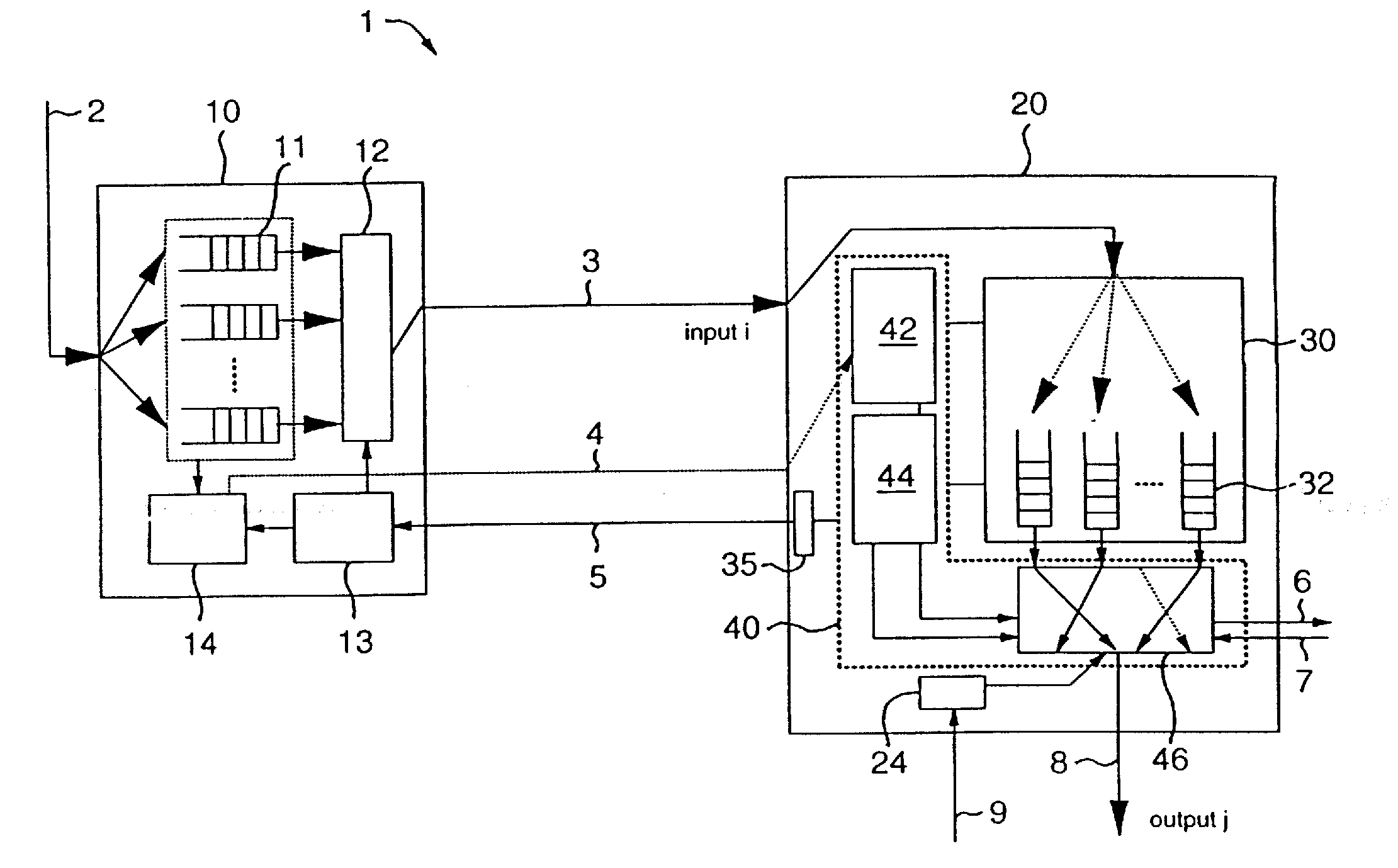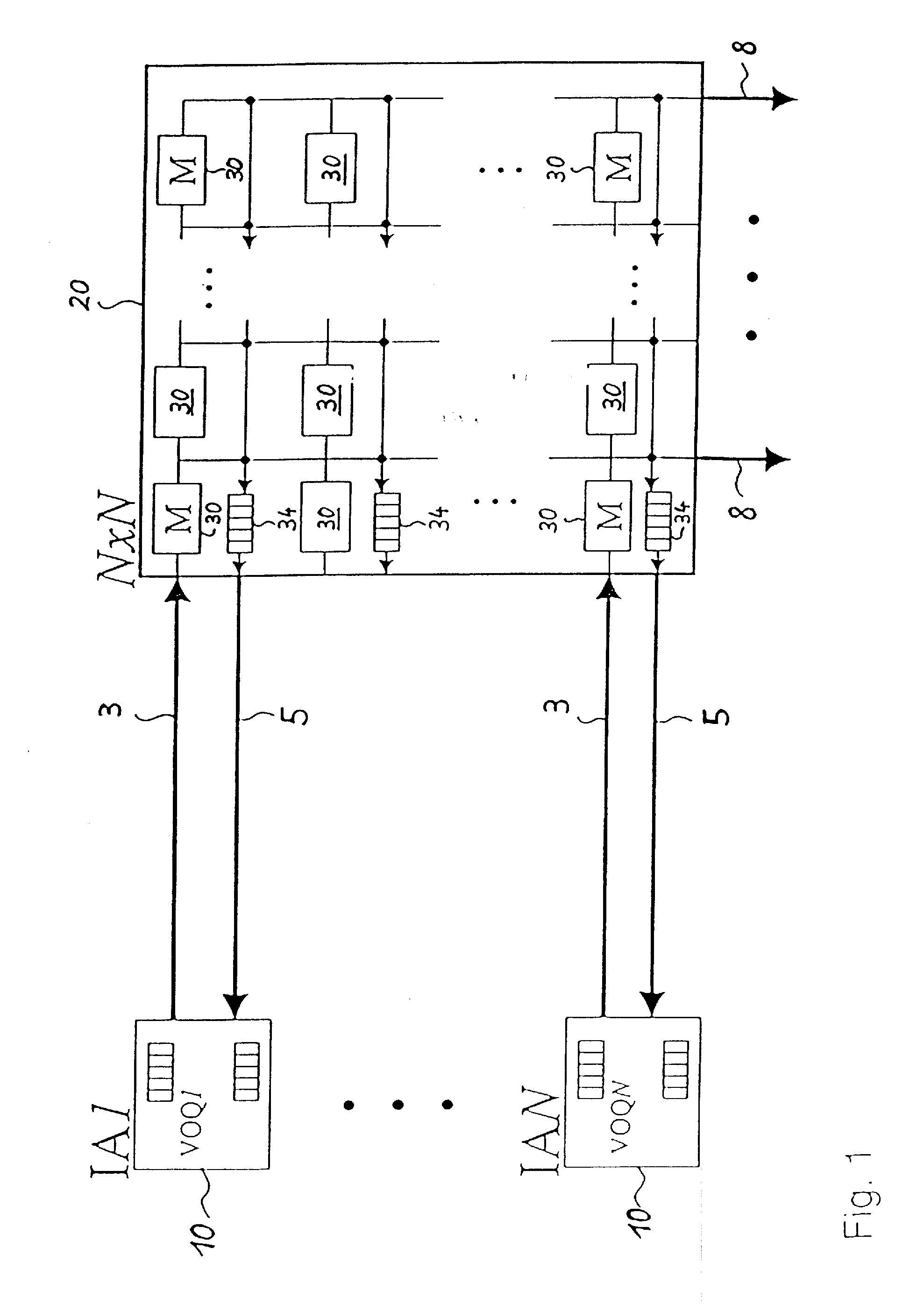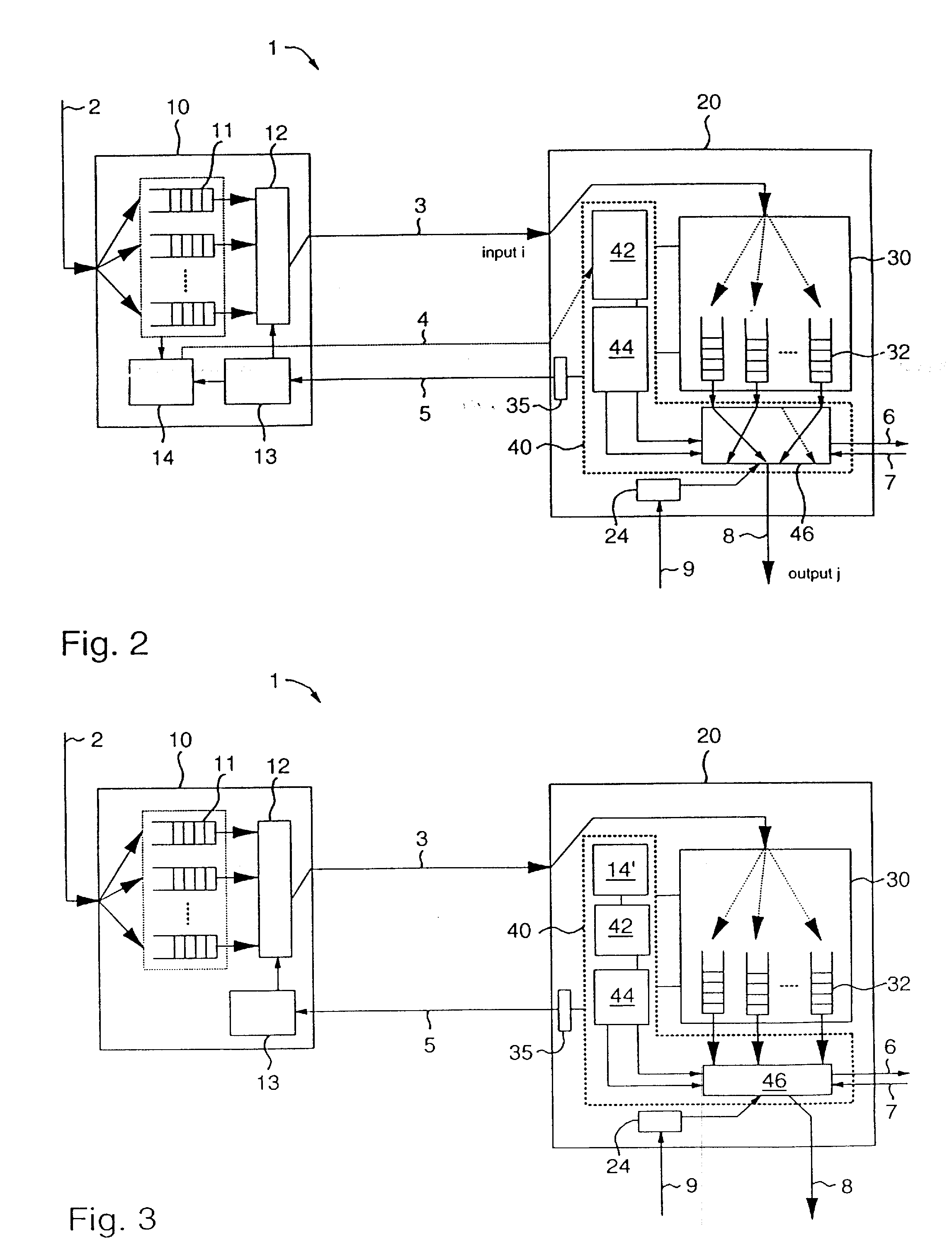Memory sharing mechanism based on priority elevation
a memory sharing and priority elevation technology, applied in the field of communication systems, can solve the problems of inability to implement economically, delay in the same amount of flow control signals that are returned by the switch to the port adapter, and high cost of the switch-internal buffer, so as to achieve easy and effective implementation, less memory, and easy tolerability
- Summary
- Abstract
- Description
- Claims
- Application Information
AI Technical Summary
Benefits of technology
Problems solved by technology
Method used
Image
Examples
Embodiment Construction
[0032]In the following the embodiments of the invention are addressed. The number of modules and units is chosen for sake of example only and can be varied without leaving the scope of the invention. For sake of clarity in FIGS. 1 to 3 for a number of identical units arranged in parallel only some of these units are depicted.
[0033]Before an embodiment of the present invention is described, a schematic illustration of a switch arrangement of the state of the art is addressed. FIG. 1 shows a communication or switching device 20 that is connected via connecting means 3, 5 to an input adapter 10 and via switching device outputs 8 to output adapters or other communication units, which for the sake of simplicity are not shown. Each input adapter 10 comprises virtual output queues (VOQN), hereafter referred to as queue units. The switching device 20 has a memory 30 that here comprises memory units 30, also labeled with M, which can be shared. These memory units 30 are arranged within a mat...
PUM
 Login to View More
Login to View More Abstract
Description
Claims
Application Information
 Login to View More
Login to View More - R&D
- Intellectual Property
- Life Sciences
- Materials
- Tech Scout
- Unparalleled Data Quality
- Higher Quality Content
- 60% Fewer Hallucinations
Browse by: Latest US Patents, China's latest patents, Technical Efficacy Thesaurus, Application Domain, Technology Topic, Popular Technical Reports.
© 2025 PatSnap. All rights reserved.Legal|Privacy policy|Modern Slavery Act Transparency Statement|Sitemap|About US| Contact US: help@patsnap.com



